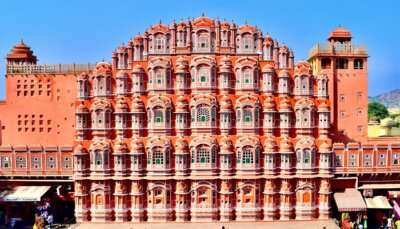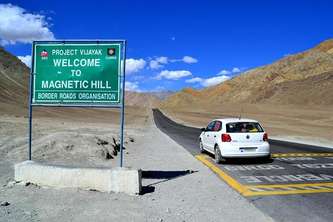Explore Aruvikkara Temple – Things to Do & Nearby Places in 2026

The Aruvikkara Bhagavathy Temple, a radiant jewel nestled amidst the tranquil environs of Kerala, invites devotees and explorers alike. Dedicated to the fierce and benevolent Goddess Durga, this ancient temple breathes history, cultural significance, and captivating natural beauty. Devotees worship Maa Durga in her powerful and enigmatic “Bhagavathy” form. Overlooking the stunning background of the Aruvikkara Dam, the temple stands as a symbol of spiritual tranquillity and cultural heritage. If you have considered visiting the Aruvikkara temple, this guide will highlight all the relevant details.
History And Mythology Of Aruvikkara Bhagavathy Temple
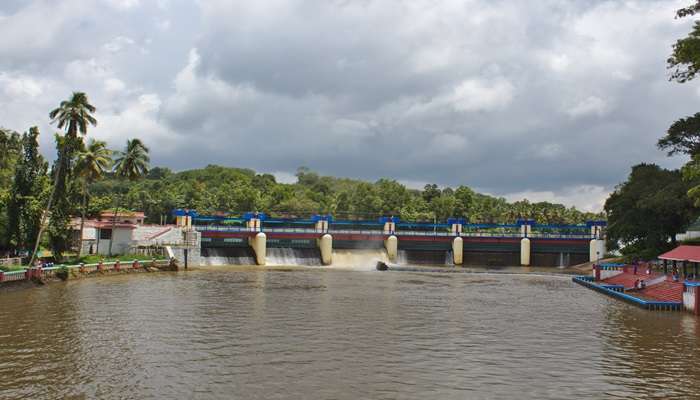
The origins of the Aruvikkara temple remain shrouded in mystery. Given its ancient age, several alleged stories and legends surround its origin and establishment. Legends whisper of its existence for centuries, with some accounts tracing its roots back to the era of Parasurama, the sixth avatar of Vishnu. What’s interesting about the temple is the blend of Kerala and Tamil-style architecture. It further strengthens the narrative of antiquity.
The presiding deity, Bhagavathy, is a manifestation of the powerful Goddess Durga. Here, she is revered as a protector, a fierce vanquisher of evil, and a symbol of Shakti, the divine feminine force. Mythology associates the temple with Durga’s slaying of the demon Mahishasura. Some devotees believe in the story that the temple’s location, on a rock overlooking the Karamana River, is imbued with the Devi’s power, safeguarding the surrounding region.
Pushing aside the mythological and religious significance, the temple played a significant role in the 1940s Aruvikkara Insurrection, which was against oppressive land tax policies. The temple grounds were a rallying point for the uprising, highlighting its deep connection to the local populace.
Also Read: Places to Near Trivandrum
Things To Do In Aruvikkara Bhagavathy Temple
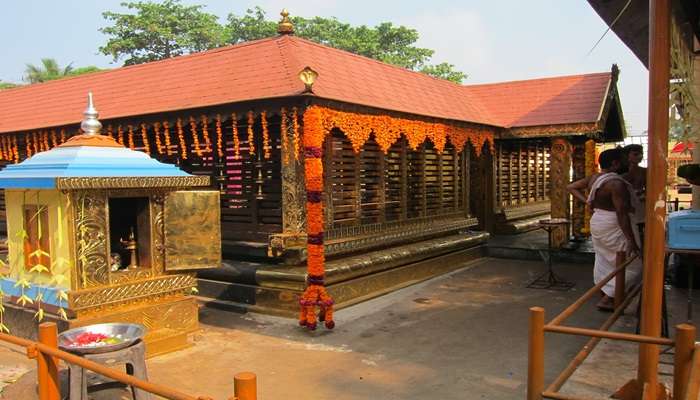
A visit to the Aruvikkara Bhagavathy Temple is an immersive experience that transcends mere sightseeing. Besides indulging in the history of the Aruvikkara Bhagavathy temple, much more awaits you inside the temple. Usually, the experience starts with paying a visit down to the inner sanctum where Goddess Bhagavathy resides. This is where darshan occurs and you can offer your puja and prayers to the deity. The priests around the temple conduct different kinds of rituals you can witness.
A unique trait of the temple lies in the pond inside the premises. The temple pond, teeming with large fish, is considered sacred. Devotees often partake in the customary practice of feeding these fish, seeking divine favour. And, lastly, don’t forget to stop and explore the architecture and design elements that adorn the temple walls.
Captivating Highlights Of The Temple
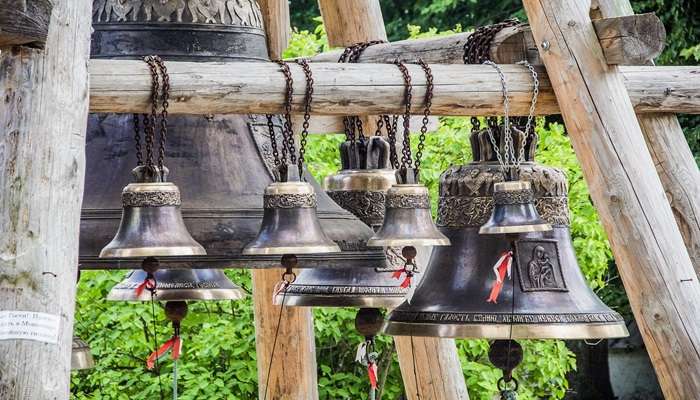
When you learn about the Aruvikkara Bhagavathy temple’s history, a lot about the temple’s significance unfolds. This involves the temple’s development, spiritual significance, and existence in its place.
- Perched on a rock overlooking the cascading Karamana River, the temple offers a breathtaking panorama. The serenity of the natural surroundings amplifies the spiritual aura.
- Also, the temple celebrates a ten-day annual festival during February and March, which adds to its popularity. If you want to witness the temple’s grandeur and vibrancy, this is the period you need to visit.
- We briefly discussed the importance of the sacred pond inside the temple. Don’t miss out on feeding the fish inside the pond.
Related Posts: Places to Visit in Trivandrum
Places To Visit Around Aruvikkara Bhagavathy Temple
While the Aruvikkara Bhagavathy Temple is the star attraction, the surrounding area offers additional delights for curious explorers.
1. Aruvikkara dam

After exploring the Bhagavathy temple, walk towards the Aruvikkara Dam, located upstream from the temple. It is one of the most vital water sources for major parts of Thiruvananthapuram city. You can take a stroll around the dam’s structure, sit and relax, and soak in the area’s majestic appearance.
Best Time To Visit: October to February
Location: Thiruvananthapuram, Kerala
2. Vellayani Lake

Up next on the list is Vellayani Lake. It is quite an offbeat place but one you wouldn’t regret visiting. Perfect for nature enthusiasts and bird watchers, the lake offers a tranquil escape for tourists. Boat rides are available on the lake, too, which adds to the experience.
Best Time To Visit: November to March
Location: Thiruvananthapuram district, Kerala
Related Posts: Things To Do In Kovalam
3. Aruvikkara Edaman Shiva Temple

The Aruvikkara Shiva temple is another popular spot that deserves to be explored. It’s located nearby, so navigation should never be an issue. The temple’s power and spiritual significance make it stand out as a pilgrimage site. It is one of the 16th-century temples in Kerala and is dedicated to Lord Shiva and Parvati. The highlight of the temple lies in its simplicity.
Best Time To Visit: February to March
Location: Aruvikkara, Kerala 695543
Best Time To Visit The Aruvikkara Temple

If you are in Kerala and anywhere near the Aruvikkara Devi temple, there’s no point in wondering whether or not to visit. The temple is open year-round. The best time to visit Aruvikkara Bhagavathy Temple is during the festival of ‘Attukal Pongala,’ celebrated in the Malayalam month of Kumbham (February – March). Besides the vibrancy of the temple’s premises, the place is filled with crowds from different parts of the world. During this festival, the female devotees gather around to offer “Pongal” to the presiding deity in the temple.
The ideal period is between November and March for devotees who want to visit the temple regardless of the weather and season. The weather is comfortable, the skies are clear, and the lush greenery around the temple increases multiplefold, adding to its beauty.
Note: If you aren’t fond of crowds, visit the temple on weekdays since weekends are usually more crowded with devotees.
Related Posts: Temples in Kerala
How To Reach
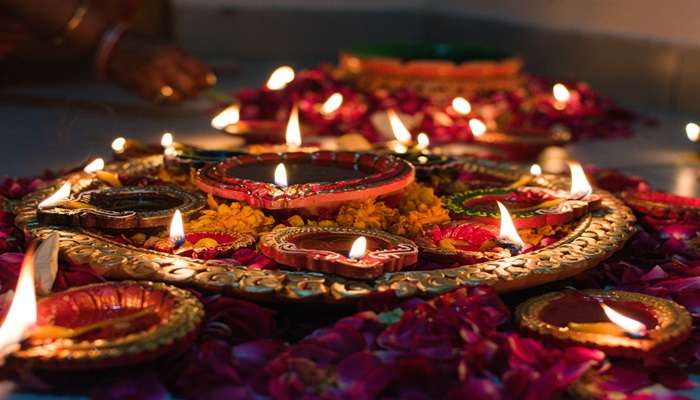
Reaching the temple isn’t a tricky affair. You can get their help desk via the Aruvikkara temple phone number, and the authorities will guide you accordingly.
By Air: Thiruvananthapuram International Airport is the nearest airport to the temple. You can take cabs and taxis from there.
By Road: Aruvikkara is well-connected by road to nearby towns and cities. State buses and private taxis ply regularly to the temple.
By Train: Thiruvananthapuram Central Railway Station is well-connected to major Indian cities. From the station, taxis or auto-rickshaws can whisk you to the temple.
Essential Information For Devotees
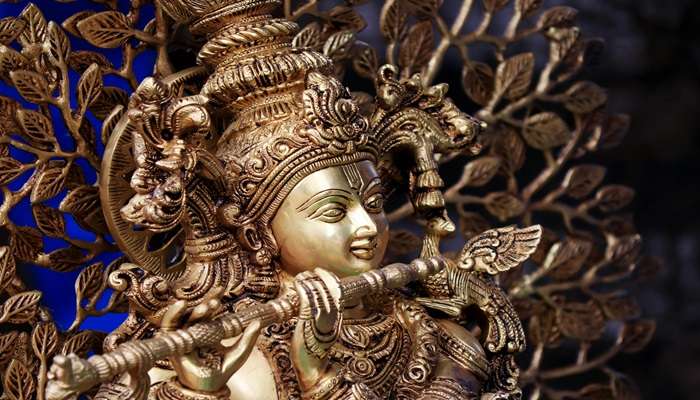
Visiting any new temple, including the Aruvikkara temple in Kottayam, requires a solid plan. This means knowing the temple’s opening hours, entrance fees, and other details.
Aruvikkara Temple Timings
The Aryankavu temple timings are pretty much similar to most of the other temples around Kerala. It opens in two phases from 5:00 AM to 11:00 AM and 5:00 PM to 7:30 PM. The temple isn’t open for long during the evening, so you must plan to visit in the morning. Usually, due to less time in the evening and extensive crowds, it becomes difficult to wait for your chance for the darshan and puja.
Dress code
Temples demand modesty and decency. So, regarding the dress code inside the Aruvikkara Bhagavathy temple, wear clothes that cover your shoulders and limbs below the knee. These are mandatory to prioritise. Failing to stick to the required dress code can even deny you entry inside the temple.
Etiquette and rules
Besides the details mentioned, maintaining silence is the most important sign of respect inside the temple. You don’t want to disrespect anyone, despite the long queues. Additionally, ensure that you avoid taking pictures where there are restrictions. Always remove your footwear before entering the temple; if you have many belongings, leave them in the lockers outside.
You May Also Like To Read: Famous Temples in Kerela
The Aruvikkara Bhagavathi Temple, Thiruvananthapuram is a captivating religious spot woven with threads of history, mythology, and cultural significance. A visit to this sacred abode promises a spiritual experience and a chance to immerse yourself in the beauty and traditions of your next trip to Kerala. You will not regret making that detour to Aruvikkara to explore the temples.
For our editorial codes of conduct and copyright disclaimer, please click here.
Cover Image Source: Facebook
Frequently Asked Questions About Aruvikkara Temple
Are there any special poojas or rituals performed at the temple?
The temple conducts daily pujas throughout the day. Specific pujas and rituals might be associated with festivals or special occasions.
Is photography allowed inside the temple?
You aren’t allowed to take pictures near the inner sanctum. However, the rest of the temple premises don’t impose restrictions on taking pictures.
What are the timings for the annual festival?
The Aruvikkara Mahotsavam is generally held in February/March. The exact dates may vary each year.
Are there places to stay near the temple?
There aren’t any hotels or resorts near the temple. You’d have to book your accommodation in the nearby city.
Is it best to visit Aruvikkara temple during monsoon?
Most devotees prefer visiting during monsoon season, mainly due to the weather and fewer crowds. However, the temple is open 365 days a year, so you can visit anytime.
What is the timing of the Aruvikkara temple timings?
The timing of the Aruvikkara Temple are as follows: 5:00 AM to 11:00 AM and 5:00 PM to 7:30 PM.
People Also Read:
Chamundeshwari Temple Sri Venkateswara Swamy Vaari Temple Kapaleeswarar Temple

Unveil the hidden treasures of the globe and turn every travel dream into reality. As a Content Writer, I am passionate enough to craft stories from ancient wonders to modern marvels. My words paint the picture-perfect itinerary for unforgettable experiences. Let my words be your trusted guide to immerse in the diverse culture and discover the beauty of the unknown.



